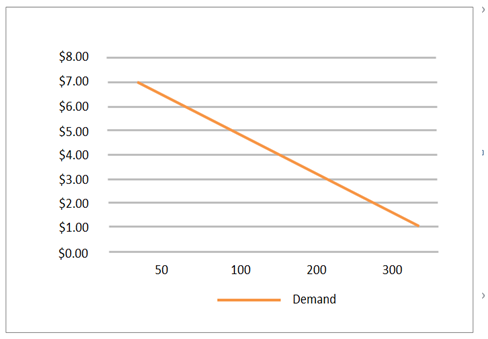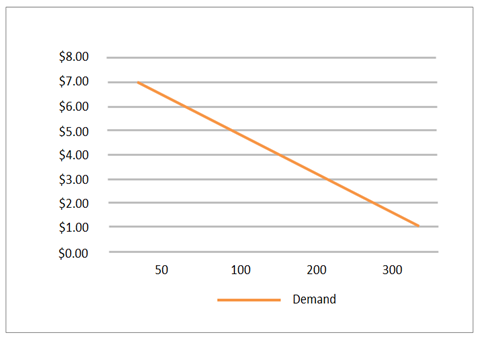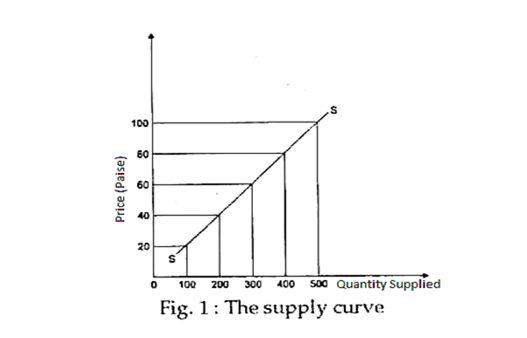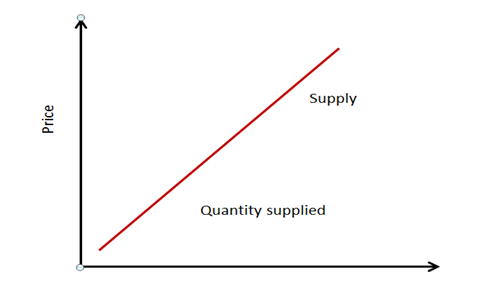Understanding Supply and Demand: Concepts, Curves, and Influencing Factors
Question
Task: How do supply and demand curves interact in the market economy, and what are the key factors that influence these curves?
Answer
Introduction
The report below has discussed fundamental concepts of economics i.e., supply and demand along with their curves. There are multiple influencing factors that can positively or negatively influence demand and supply curves and it has been discussed below in the report. Similarly, task 2 has highlighted different contemporary economic theory of the 20th and 21st century that demonstrates the concept of supply and demand in overall economic development.
Task 1: Supply and Demand curve
1.1: Demand Curve
The most fundamental concepts of economics are demand and supply. This is integrated with the daily life of every farmer, manufacturer, or even consumer. In the market economy, the price level as well as the quantity of the service or good is decided by the level of demand and supply mutually.

Figure 1: Demand
Source: Self Developed
The above figure shows the basic interconnection between the demand and the price of goods. The law of demand and the changing factors are explained below.
The Law of Demand
The demand for a product or good automatically drops when the price of that good or product increases except for a few doubtful situations (Pinkasovitch, 2019). Let’s assume that the product is a refrigerator and it is on sale. A large number of consumers will be more interested in purchasing them than they buy them at regular prices and the demand graph will rise. On the other hand, when the price is higher than the regular price, there will be a rare number of consumers interested in buying except the wealthy ones. As a result, the demand graph will go down automatically. The demand graph is drawn from the perspective of consumers.
A hypothetical demand schedule can be demonstrated through the below-given table below considering the above figure i.e.:
|
Price($) |
Quantity Demand (Units) |
|
5 |
10 |
|
4 |
20 |
|
3 |
30 |
|
2 |
40 |
|
1 |
50 |
Table 1: Demand curve
Source: Self-Developed
Demand Curve
The demand curve is adiagram that graphically showcases the connection between the demand and price of a product or service. In the graph, the price of the product or goods is shown on the vertical side and the demand on the horizontal side. Let's have a look at the graph below which will clarify the fact.

Figure2: Demand Curve
Source: Self Developed
In this figure, the slope goes downwards and indicates when the price rise, the demand tends to fall. The effect on demands depends on the products and it varies. The demand elasticity is measured using the steepness of the curve. The lesser steep curve means a small change in the price made a huge switch in the demand for that product (Luther, 2022).
Influencing factors on the demand curve
There are a few numbers of factors that influence the demand for a good in the market. The main reasons for the shifting of the demand curve are discussed below.
Changes in the income of the consumer
The demand for goods increases when the cost of it remains constant or gets decreases. On the other hand, the demand decreases in the market when the price increases. As a consequence, the demand curve gets shifted to the right or left depending on the situation.
Changes in the price of the substitute goods
Firstly, when the price of a certain product gets higher, the consumer tends to shift to its alternative which costs lower. Secondly, if the number of alternative goods decreases, the demand for that certain good increases. As a result, the demand curve shifts to the right or left.
Preference of Consumers
At any given moment, what types of products are in demand influences the demand curve to move. When the price of a commodity remains the same, if its popularity increases, the demand for that product will also increase. Therefore, the demand curve will move accordingly (Liberto, 2019).
Buyer’s expectation
If the consumer is expecting to increase the price of a certain product in the future due to a specific reason, perhaps for limitation in supply, the demand will increase for that product which will affect the demand curve.
Advertising
When an item is in trend or gets popular due to an advertisement, people rush to buy it. For example, Apple INC launches the new iPhone which is considered the best Smartphone globally. Consumers who are interested to get one iPhone will reach the store immediately before it gets out of stock. Due to a huge sale, the Demand curve will move upward.
The law of the demand curve and the influencing factors discussed above provides a useful model to determine and understand the pricing as well as the equilibrium price. When the suppliers can fulfill the demand, the consumers get everything at their expected price. However, the demand and pricing may vary due to the influence of different factors. Considering these factors, economists determine the effect on consumer behavior as well as the spending pattern by measuring the demand elasticity (Hall, 2020). The law of demand is essential because it helps investors, economists, and entrepreneurs to keep the market balanced.
1.2: Supply Curve
The relationship between demand and supply analyses both the price level and quantity of a good in the economy. By using the supply-demand analysis, economists determine the cause of the movement in the supply-demand curve. The supply curve, laws of supply, and the factors causing movement in the supply curve are elaborated below. It will help to determine how the price of products adjusts the supply to maximize profitability.

Figure 3: Supply Curve
Source: (Nipun, 2017)
The law of supply
According to Gordon, (2022), the law of supply indicates that the supply quantity will rise when the supplier gets a higher price. Being a microeconomic law, it shows when all other factors are neutral, the increasing price of a good will also increase the quantity the supplier offers and vice versa. As the price goes up, the supplier will also attempt to increase the profitability by increasing the sold item quantity. In addition, new suppliers will get the chance to enter the market and increase the overall supply. There are five types of the law of supply.
|
Supply |
Analysis |
|
Market supply
|
Market supply means the total supplied products from all suppliers. |
|
Joint supply |
When multiple goods are produced by a single company or supplier, it is a joint supply. |
|
Composite supply |
This type of supply occurs when the products are naturally linked for selling as a bundle only. |
|
Short run supply
|
When a company supplies products without any additional investment, the total supply is called short-run supply. |
|
Long run supply
|
It is also called a long-term supply. The long-run supply consists of factors like suppliers' investment in new production. In such cases, sometimes new suppliers also enter the market. |
Table 2: Kinds of supply
Source: SelfDeveloped
Supply Curve
The supply curve showcases the relation between the cost and supply of certain items from the viewpoint of the supplier in place of the consumer. The graph below will illustrate how the supply curve works.

Figure 4: Supply Curve
Source: Self Developed
In the above graph, the vertical axis indicates the price of the product and the horizontal axis indicates the supplied quantity. The upward slope means a higher price, and the supplied quantity is also high. When the price is lesser, the quantity is also lower (Luther, 2022).
Influencing factors on the supply curve
Some factors can affect the supply curve. Here few important factors are discussed below.
Forecast of price and demand
Some certain companies and businesses plan their production on the forecast of consumer demand and price by using software that helps in forecasting demands. Sometimes companies and sellers hold back stocks to increase profitability in the future with the help of forecasting.
Competition
When new suppliers enter the market, the demand may stay stable although the price is not increasing. The new suppliers often offer products in the sale or at a lower price than the existing sellers. That’s how the competition affects the supply curve.
Production cost
Companies escalate their profitability by selling more products when the price rises. It allows them to increase the supply as well. On the other hand, if the production cost falls and the price remains stable, it will result in increased profit and incentives that will help in supplying more products.
Technology
Day by day, the improvement in technology makes production easier and lowers costs as well. Sellers and suppliers can sell more products at a lower price. That's why it is an important influencing factor on the supply curve.
Transportation
Rising shipping costs and transportation delays can affect the supply curve. Companies will not be able to supply the products or purchase the raw materials needed. Even employment will be affected and production will be stopped.
Strict regulations in industries
There are some regulations companies need to comply with. Due to the strict regulations, there are some limitations in supplying products that affect the supply curve.
Task 2: Emerging theories and models
The subject of this article is the theories and models of 21st-century economics as well as 20th-century economics and how it relates to contemporarybusiness practices. There are many theories, but we will discuss a few important theories among them. Wealth and finance also get involved sometimes, but economics is not all about money (Hughes, 2018). But the fundamental ideas of economics are not convenient today, yet they still take an important role in future decision-making.
Theories of contemporary economics
Modern economic theory tends to be separated from classic economics theory. According to the suggestion, the government can make more monetary funds without consequences as the government itself issues the currency. There is no need of relying on tax revenue or borrowing (Lockert, 2022). In some aspects, the modern economic model matches the macroeconomics study. Economics changed through history and the term ‘modern economics appeared after the span of classic economics. Some noticeable connections still can be found between the two types of economics theory. The classical economy depends on the assets used for the production of materials. The purpose is to determine how the economy uses the resources at their best in the market. Perhaps the greatest economic theory is Keynesianism which noticed the supply and demand of the market (Vitez, 2023).
Differences between the 20th-century and 21st-century contemporary economics theory
There has been a development in economic theories since the 20th century and it has been found that both traditional along with modern approaches to developed theories aimed to improve the labour market balance (Jarmolowicz and Knapi?ska, 2011). During the analysis of the 20th-century economic theories, one can’t avoid Keynesian and neoclassical theories which have contributed a lot in encouraging labour market balance in the respective filed of economics. On the other hand, while considering the 21st-century economic theories the selected theories are monetary and structural change theories. These theories although developed in the early century however it is considered one of the emerging theories of the 21st century by multiple economists. Economic growth is consistent and it is dynamic in nature and considered one of the vital fields of economics. Considering the study of human history it can be said that the modern period has been categorized by rising life expectancy, population explosion, quick urbanization, and changing dynamics of economics (Ucak, 2015).
However, due to the industrial revolution along with the growth in the economy which is evenly spread all over the world. The technological progress in the 21st century can be considered at the forefront of the economic growth theory. It has been stated that if economist seeks to consider technology critically then more historical discipline can be expected. While talking about neoclassical theory altogether determines the broad approach that aims in describing the manufacture, pricing, and expenditure of different services and goods and overall income allocation through adequate supply and demand (CFI, 2022).On the other hand monetary theory denotes relies on the concept that a change in the overall money supply is the crucial driver of economic activity. It can be said that both these theories have different sayings in economic activity and that differs them from one another.
In contrast to that Keynesian theory as evident to everyone is based on two significant concepts, firstly collective demand is probable compared to integrated supply and it is the main reason behind short-time economic activities such as a recession. Secondly, prices and wages can possibly be tackily resulting in an economic recession, redundancy, etc. the theory has also highlighted that insufficient general demand results in long-lasting periods of elevated unemployment (Jahan, Mahmud, and Papageorgiou, 2014). On the other hand, Structural change theory denotes a dramatic change in the way existing markets, sectors, and industries encourage different crucial economic developments. It has been said that the main reason behind structural change is the vitality that is intrinsic within the system. As discussedabove technology can play a crucial part in economic development similarly, structural change in the 21st century is often occurred because of technological advancement.
Neoclassical theory of the 20th century explains the production of goods, pricing, and consumption in the market through supply and demand. Neoclassical economics merges the cost of production theory derived from classical economics and the concept of utility maximization as well as marginalism. Neoclassic economics started in 1900s. The Keynesian theory and the neoclassic theory merged in 1950 which is still dominating economics. Neoclassical economics evolved the study regarding utility and marginalism. The utility is all about measuring the satisfaction of consumer goods whereas marginalism shows the change in the product's value with the effect of an additional amount. The Keynesian theory says that the demand needs to be increased to enhance growth. In this theory, the primary driving force is the demand of the consumer. Keynesians believe that wages and prices are relatively immovable and the government should help to achieve employment to the fullest (Jahan, Mahmud, and Papageorgiou, 2014). But overvaluing the Keynesian strategy boosts inflation also.
The monetary theory believes that a currency is an important factor in economics. Change in the economy also affects the monetary system. According to monetary theory, the reserve bank can change economic growth by controlling the reserve ratio, the discount rate, and the open market operations. An increase in the money supply also increases the economic activities of a nation and vice versa. The Lewis model started between the 1660s and 1970s. According to this model, to transform the structure, a country should focus on the need. It focused on industry-related activities with high productivity of labour instead of agriculture with low productivity of labour. Structural change also has impacts on employment.
Conclusion
It can be concluded that demand and supply are the two most basic concepts when it comes to economics. There are multiple factors that contribute to the rise and fall of the demand and supply curve. For instance, the demand curve can be fluctuated because of changes in consumer income, preferences, products substitute, expectations, etc. On the other side, the supply curve can be fluctuated because of predicted price, demand, production cost, technology, etc. The report has also highlighted different theories of contemporary economic theories from the 20th and 21st centuries and found that each of these theories carries a significant amount of importance in determining the rise and fall of economic development.
References
CFI (2022).Neoclassical Economics. [online] Corporate Finance Institute. Available at: https://corporatefinanceinstitute.com/resources/economics/neoclassical-economics/ [Accessed 19 Jan. 2023].
Gordon, J. (2022). Demand-Supply Analysis - Explained. [online] The Business Professor, LLC. Available at: https://thebusinessprofessor.com/en_US/economic-analysis-monetary-policy/demand-supply-analysis-explained [Accessed 18 Jan. 2023].
Hall, M. (2020). What Factors Cause the Demand for a Good to Change [online] Investopedia. Available at: https://www.investopedia.com/ask/answers/040315/what-factors-influence-change-demand-elasticity.asp [Accessed 18 Jan. 2023].
Hughes, J. (2018). Why Studying Economics is Vital in Today’s World. [online] www.masterstudies.com. Available at: https://www.masterstudies.com/article/why-studying-economics-is-vital-in-todays-world/ [Accessed 19 Jan. 2023].
Jahan, S., Mahmud, A.S. and Papageorgiou, C. (2014).What Is Keynesian Economics? - Back to Basics -FINANCE & DEVELOPMENT - September 2014 ? Volume 51 ? Number 3. [online] Available at: https://www.imf.org/external/pubs/ft/fandd/2014/09/pdf/basics.pdf [Accessed 19 Jan. 2023].
Jarmolowicz, W. and Knapi?ska, M. (2011).Labour market theories in contemporary economics. [online] Available at: https://www.researchgate.net/publication/46531188_The_Evolution_of_Economic_Theory_during_the_Twentieth_Century [Accessed 19 Jan. 2023].
Liberto, D. (2019). Change In Demand Definition. [online] Investopedia. Available at: https://www.investopedia.com/terms/c/changeindemand.asp [Accessed 18 Jan. 2023].
Lockert, M. (2022). What is Modern Monetary Theory? Understanding the alternative economic theory that’s becoming more mainstream. [online] Business Insider. Available at: https://www.businessinsider.com/personal-finance/modern-monetary-theory?IR=T [Accessed 19 Jan. 2023].
Luther, D. (2022). Finding the Balance Between Supply & Demand. [online] Oracle NetSuite. Available at: https://www.netsuite.com/portal/resource/articles/erp/law-of-supply-demand.shtml [Accessed 18 Jan. 2023].
Luther, D. (2022). Law of Supply Defined. [online] Oracle NetSuite. Available at: https://www.netsuite.com/portal/resource/articles/erp/law-of-supply.shtml [Accessed 18 Jan. 2023].
Nipun (2017). Law of Supply (With Diagram) | Goods. [online] Economics Discussion. Available at: https://www.economicsdiscussion.net/law-of-supply/law-of-supply-with-diagram-goods/25330 [Accessed 20 Jan. 2023].
Pinkasovitch, A. (2019). Introduction to Supply and Demand. [online] Investopedia. Available at: https://www.investopedia.com/articles/economics/11/intro-supply-demand.asp [Accessed 18 Jan. 2023].
Ucak, A. (2015). Adam Smith: The Inspirer of Modern Growth Theories. [online] Available at: https://www.researchgate.net/publication/282556791_Adam_Smith_The_Inspirer_of_Modern_Growth_Theories [Accessed 19 Jan. 2023].
Vitez, O. (2023). What Is Modern Economic Theory? (with pictures). [online] Smart Capital Mind. Available at: https://www.smartcapitalmind.com/what-is-modern-economic-theory.htm [Accessed 19 Jan. 2023].












